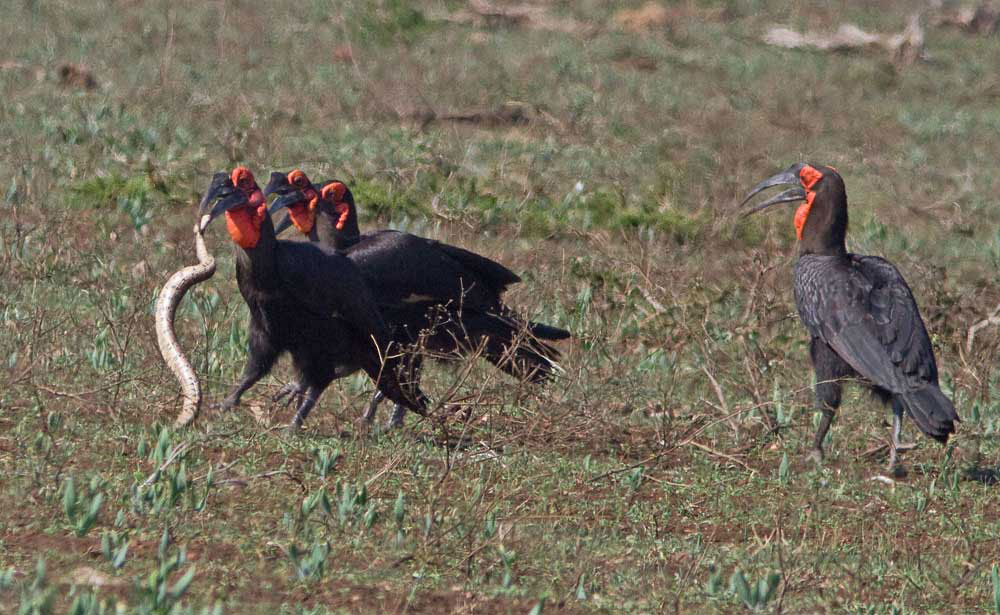Nest-raiding leopard caught in the act stealing endangered hornbill chick
Leopards are highly opportunistic predators and will dine on just about anything (including pythons, squirrels and rotten zebra if available). Birds are also on the menu – sometimes snatched out of midair in dramatic fashion or simply extracted from unguarded nests. Recently released footage from a camera-trap in South Africa’s Greater Kruger Park shows a brazen big cat raiding a hornbill nest in search of an easy meal.

The footage – captured by the team from the APNR Southern Ground-Hornbill Research & Conservation Project who have been researching these endangered birds in South Africa for over two decades – shows the leopard awkwardly teetering on the thin branches surrounding the nest before eventually clambering halfway into the entrance hole and emerging with a helpless nestling. “We arrived at the nest during our routine nest checks to monitor breeding and the nestling condition,” Ph.D. candidate Kyle-Mark Middleton and Project Researcher Carrie Hickman explained to Latest Sightings. “On arrival at the nest, we heard something rustling above and then jumping down. When we got to the foot of the nest, we saw the half-eaten nestling on the ground. We retrieved the camera trap to see what had happened.”

Southern ground hornbills are one of Africa’s most unique bird species. The world’s largest cooperatively breeding birds, adults stand at around a metre tall and sport a long, curved bill and bright red facial skin that makes them stand out as they stride through open grasslands in search of lizards, snakes, small mammals and birds to snack on. Hornbills typically nest in tall trees, but habitat loss has left them with just 10-30% of their historical range in which to roam and, as a result, their numbers have been significantly reduced.

In an effort to increase the dwindling populations, the APNR Southern Ground-Hornbill Research & Conservation Project began installing artificial nests. To date, 109 chicks have been raised in the human-created homesteads and much information has been gleaned about ground hornbill ecology. Of course, natural predation still remains a big threat to the vulnerable nestlings – something the team have had to accept.

“When watching the footage, we were very sad that this had happened, losing a chick is quite a big blow for these endangered birds,” the team explains. “At the same time, it is good that we caught the culprit. Often, we find nests empty and can only assume that it was predated. But we never know what the actual animal was.”
Predator proofing is being considered for some of the artificial nests as the team continue to learn more about the threats, both natural and unnatural, that these unique birds face.